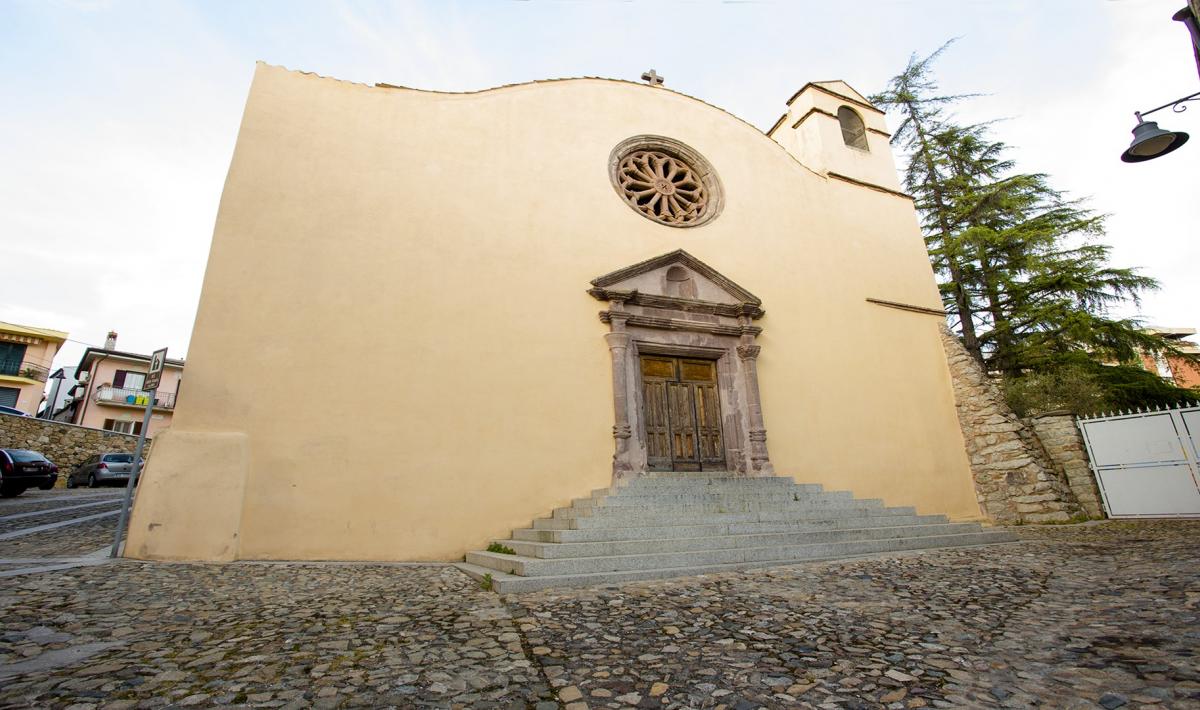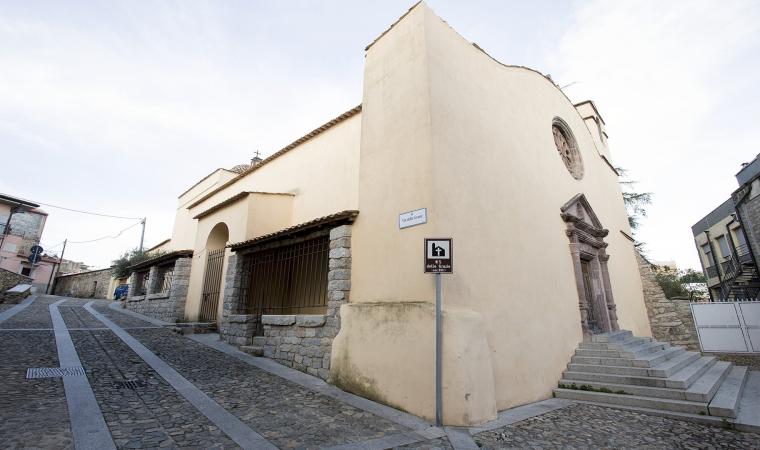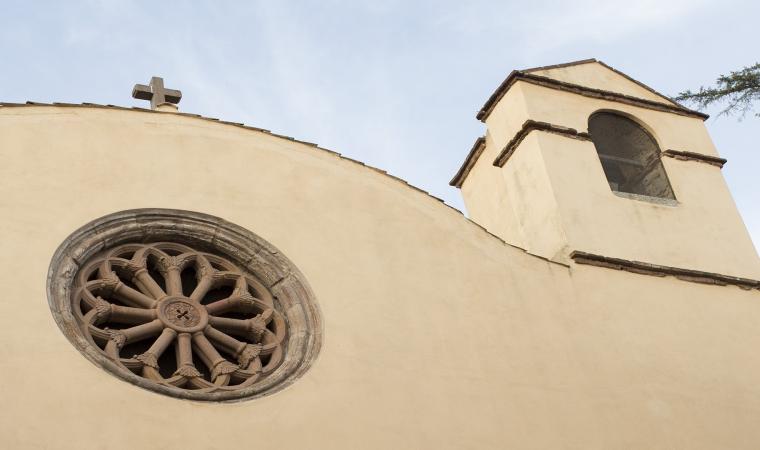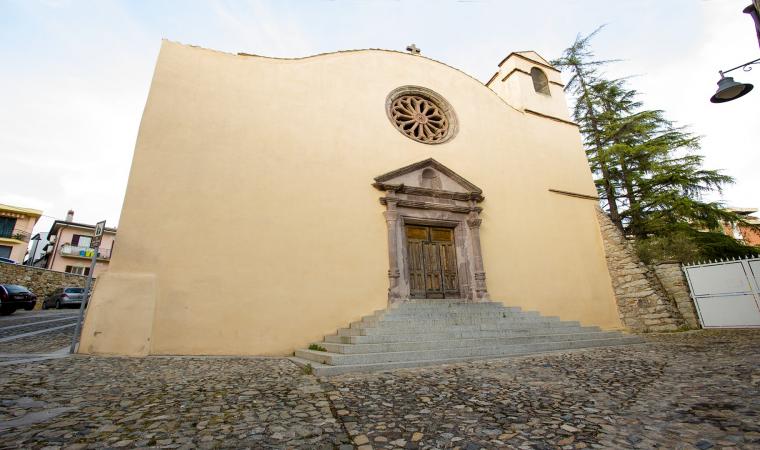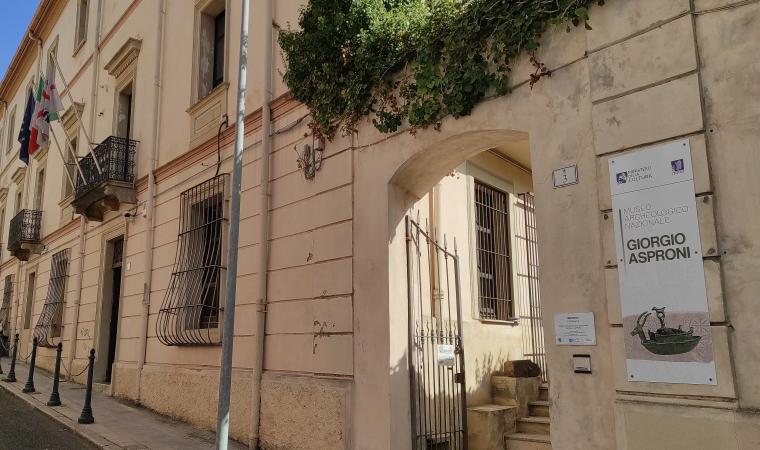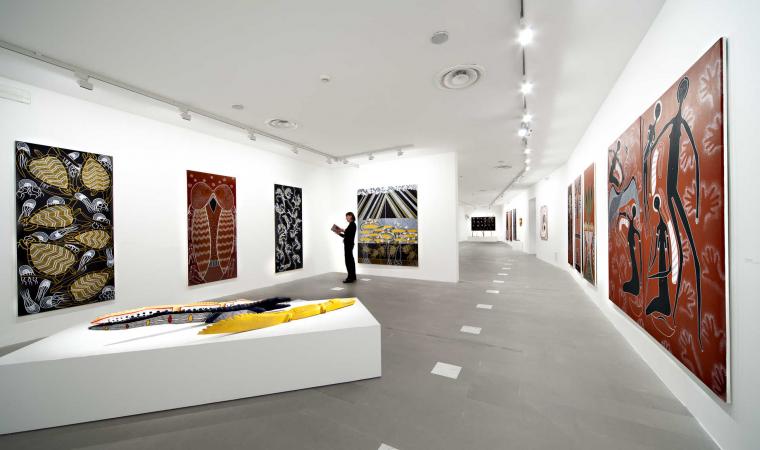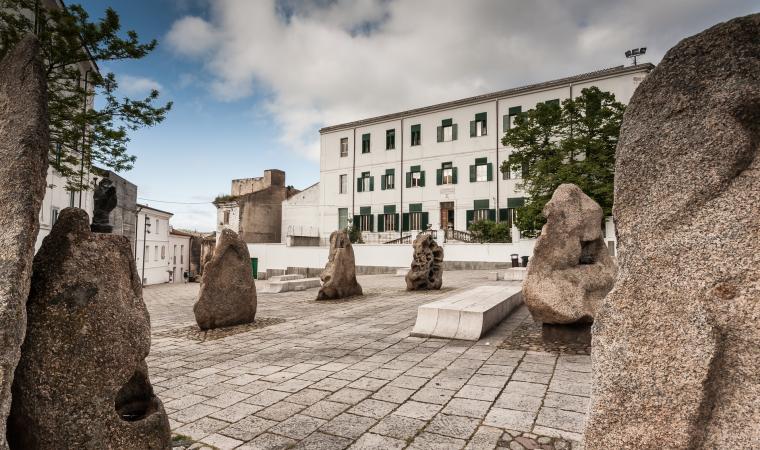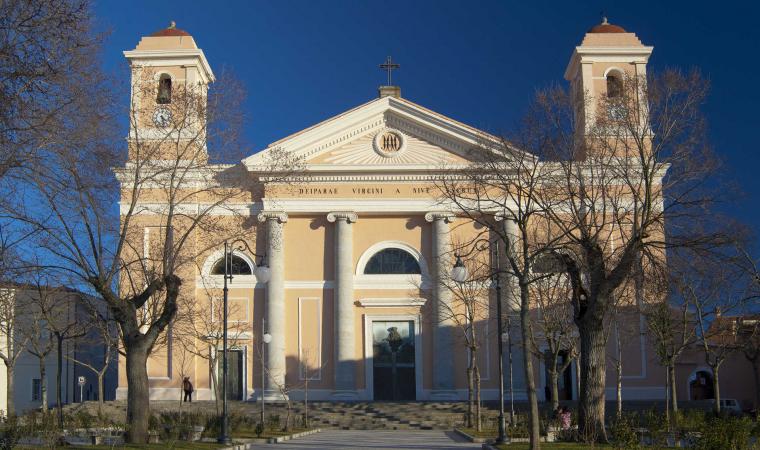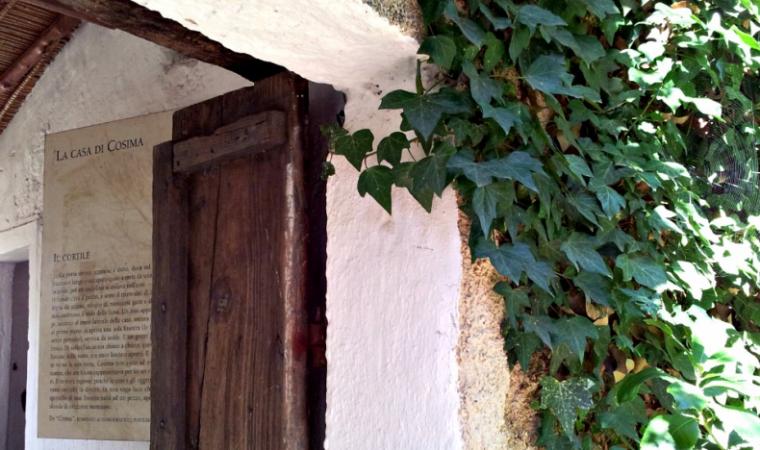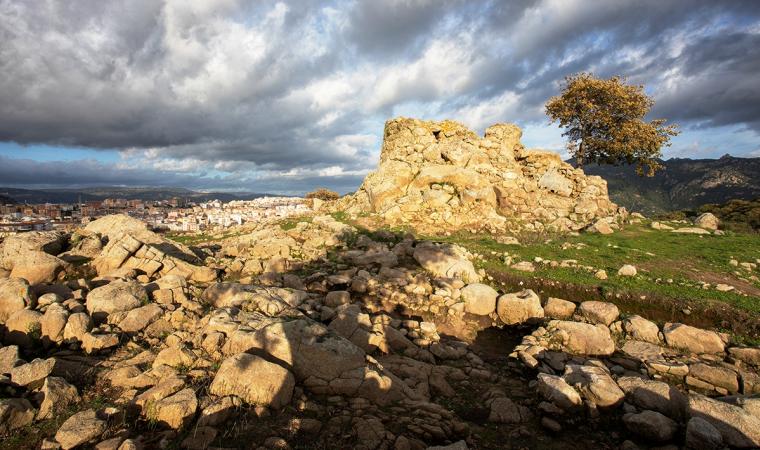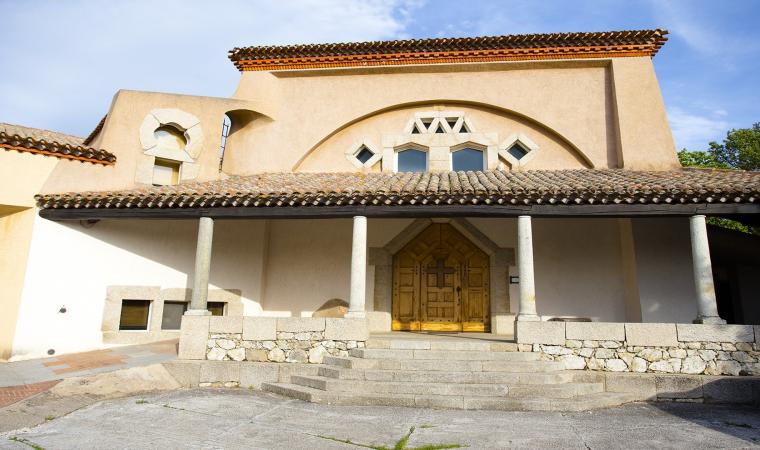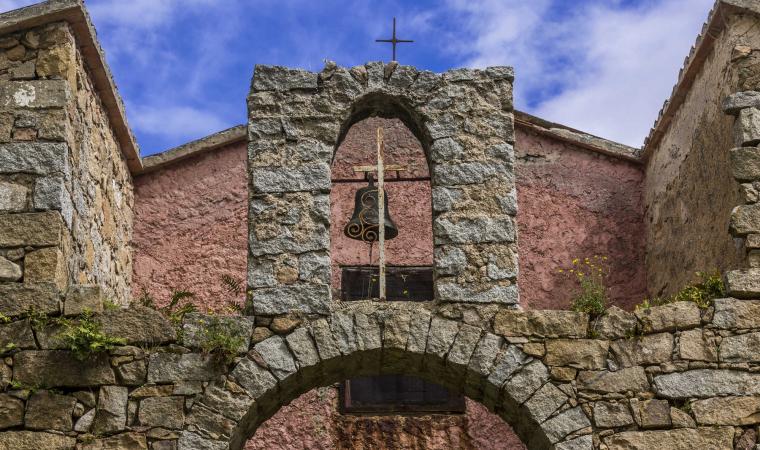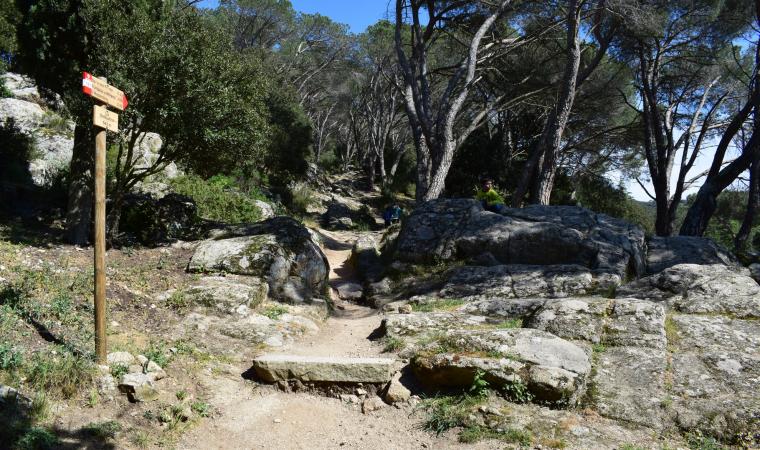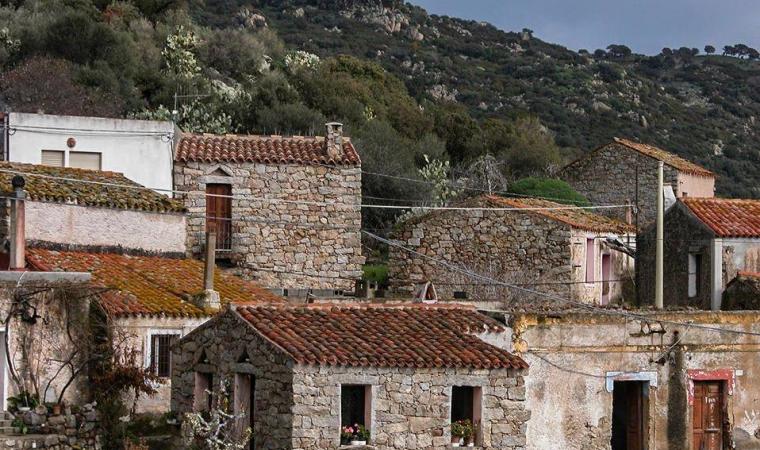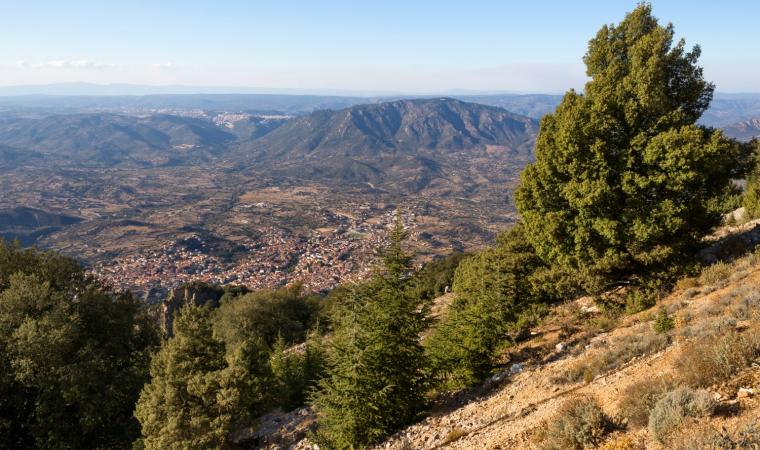Believers credit the small wooden statue of the Madonna found in Nuoro by a young shepherd in the XVII century with saving the town from the plague. In gratitude, every year since 1812 the hold of a vow made to the Virgin is broken. The festivities of the Madonna delle Grazie, the town’s patron saint, take place on 21 November, a feast that central Sardinia takes to heart. The “old church” (XVII century) in the Seuna quarter of Nuoro is dedicated to her and is called this to distinguish it from the new one built in her honour in the 1950s, which now houses the ‘miraculous’ simulacrum.
An official document states that permission to build a church in honour of Our Lady of Graces was given in 1679, but the date on the Latin inscription on the building’s façade is earlier: 13 May 1670. The inscription includes the dedication to the Madonna, the name of the man who had the church built (Nicolao Ruju Manca) and his claim to the right to be buried within the church along with his relatives.
The building has a single nave with a barrel vault ceiling and a square raised presbytery with a Neo-Classical altar that was added in the XIX century. Generally speaking, the shape and decorations of the church are a mix of Late-Gothic elements. The main door has a trachyte front piece, made up of a gable with niches, that sits on an architrave divided into identical parts by two frames and held up by two semi-columns. The capital of one of these sports flowers and animal figures, like the rose window, it too beautifully made of quality trachyte.
You can enter the church up the granite stairs or through two side entrances: the one on the left has late-Renaissance adornments, while the one on the right led to a cloister with a spacious loggia, once a hostel for pilgrims during the festivities in the patron saint’s honour. Along the sides are smaller loggias to lighten the massive volume of the building. Inside are priceless frescoes from the XVIII century that depict apostles, prophets and episodes from the Holy Scriptures.

